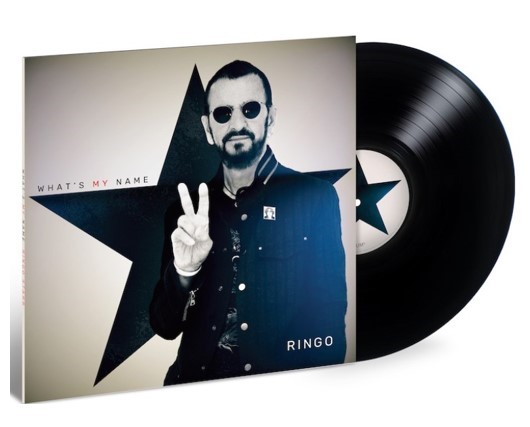Happy Wednesday and I’d like to welcome you to another installment of my recurring feature where I’m taking a deeper dive into a tune I’ve only briefly mentioned or not covered at all to date. Today, I decided to go ’70s classic rock, coz why not! If you celebrated the Fourth of July last evening and feel your morning coffee hasn’t quite done the trick to get you going at full throttle, I think I might have a good remedy: Back in the Saddle by Aerosmith!
Co-written by the Boston rockers’ Steven Tyler and Joe Perry, also lovingly known as The Toxic Twins, Back in the Saddle first appeared in May 1976 on the group’s fourth studio album aptly titled Rocks. The opener also became the LP’s third and final single in March 1977.
The tune that after a short guitar intro starts with Tyler screaming I’m baaaaack, I’m back in the saddle again, didn’t exactly refer to smashing chart success, something that’s also sadly true for many other great Aerosmith tunes. It climbed to no. 38 in the U.S. on the Billboard Hot 100 and a meager no. 68 in Canada.
Rocks, on the other hand, fared much better. How much? How about no. 3 on the Billboard 200, the group’s highest-charting album in the U.S. at the time, and no. 14 in Canada. That’s more like it! Rocks also charted in Australia (no. 45) and Sweden (no. 46). On the sales front, it reached 4X Platinum status (4 million certified copies) in the U.S. and Platinum certification in Canada (100,000 certified units) by July 1976 and November 1976, respectively.
Perry wrote the song’s main riff on a Fender Bass VI, creating the tune’s distinctive growl. The lead guitar part was performed by Brad Whitford who is otherwise mainly known as the band’s rhythm guitarist. Tom Hamilton delivered what is considered one of his heaviest and most noticeable bass lines, while Joey Kramer was manning the skins.
According to Wikipedia, Back in the Saddle features some interesting sound effects of a galloping horse and whips, and screams and even yodeling by Steven Tyler at the end of the song. Apparently, at first, they tried using a real bullwhip, but I guess drugs and bullwhips don’t mix too well, and after some self-inflected injuries, the boys ingeniously figured out to create the whip effects by “whirling a 30-foot cord from the studio, then by firing a cap gun to create the crack of the whip.” You just can’t make this stuff up!
While at the time Tyler wrote the lyrics he had cowboys and sex on his mind [sex and rock & roll? Unheard of! CMM], Back in the Saddle took on new meaning when Aerosmith named their 1984 reunion tour after it. Perry and Whitford had departed the band in 1979 and 1981, respectively, leaving Aerosmith on the rocks! It’s your typical rock & roll BS drama and, as such, not worthwhile getting into it any further.
BTW, speaking of tours, Aerosmith are set to embark on getting back in the saddle one last time in early September. In an over-the-top video clip teasing the Peace Out tour Tyler emphasizes, “And if you think we’re joking, dream on!” Clever! The Black Crowes will be part of the final hurray. Admittedly, my sweet emotions about the band I’ve never seen make me feel I don’t want to miss a thing. You see, I may not be a rock star, but I can do clever as well! Here’s the schedule.
Following are additional insights from Songfacts:
This song describes a cowboy going to a bar, picking up a girl and spending the night with her. There is lots of sexual innuendo in the lyrics among the Old West images (“I’m like a loaded gun,” “This snake is gonna rattle).
The prostitute in the song, Sukie Jones, was a creation of Steven Tyler and not a real person. One fan of the song is original Guns N’ Roses drummer Steven Adler, who in 2003 formed a band called Suki Jones, which he later renamed Adler’s Appetite.
“Back In The Saddle Again” was a song popularized by Gene Autry, who first recorded it in 1939. Autry was known as “The Singing Cowboy,” and his song played up the cowboy persona he portrayed in movies and TV specials. [Other than the title, the two tunes are unrelated – CMM]
Steven Tyler decided to use the cowboy theme for his lyrics after talking with producer Jack Douglas about using the “back in the saddle” line as a way of declaring that the band was back with a new album and ready to rock hard. Tyler always thought “back in saddle” meant having sex with your girlfriend more than once in a night, so he wrote the lyrics about a cowboy riding into town to satisfy his sexual urges. He wrote the lyrics in the stairwell of the Record Plant recording studio, where he would often write once the track was finished.
The main riff was composed by guitarist Joe Perry on a 6-string bass guitar he had recently purchased. Perry says he was “lying on the floor, stoned on heroin” when he came up with the riff. The song wasn’t recorded until almost a year later, when they used their rehearsal space – a warehouse in Waltham, Massachusetts they called “The Wherehouse” – as a recording studio by bringing in a mobile recording unit to record the Rocks album.
…After the band put the track together around Joe Perry’s guitar riff, they knew it would be a great opener for the album. Producer Jack Douglas said in the Aerosmith biography Walk This Way: “We recorded ‘Back In The Saddle’ to have this larger-than-life vibe, to bring the band right into the middle of the kid’s head when he put on his ‘phones in his bedroom late at night.”
For the bridge, lead singer Steven Tyler taped tambourines to his cowboy boots and stomped on a piece of plywood he laid down in the studio. For the crack of the whip, they bought a bullwhip, but nobody could use it. They ended up faking the whip sound by having Tyler swing a cord in a studio to make the whirling noise, then using a cap gun for the crack.
This is one of the first rock songs with a cowboy theme, complete with the sound of a horse. Other songs that take us back to the Old West include “Desperado” by the Eagles and “Wanted Dead Or Alive” by Bon Jovi [one of my favorite songs by the Jersey rockers who oftentimes draw mixed reactions among rock fans – CMM].
Sebastian Bach recorded this with Axl Rose for Bach’s 2007 album Angel Down, his first album since his 2001 release Bach 2: Basics. In an interview with the Hartford, Connecticut radio station WCCC, Bach explained that his producer Roy Z convinced him to record the song as a way to announce his return, since “Bach was Back In The Saddle.”
I guess Bach passed the audition.
Sources: Wikipedia; Songfacts; RIAA website; Music Canada website; YouTube




